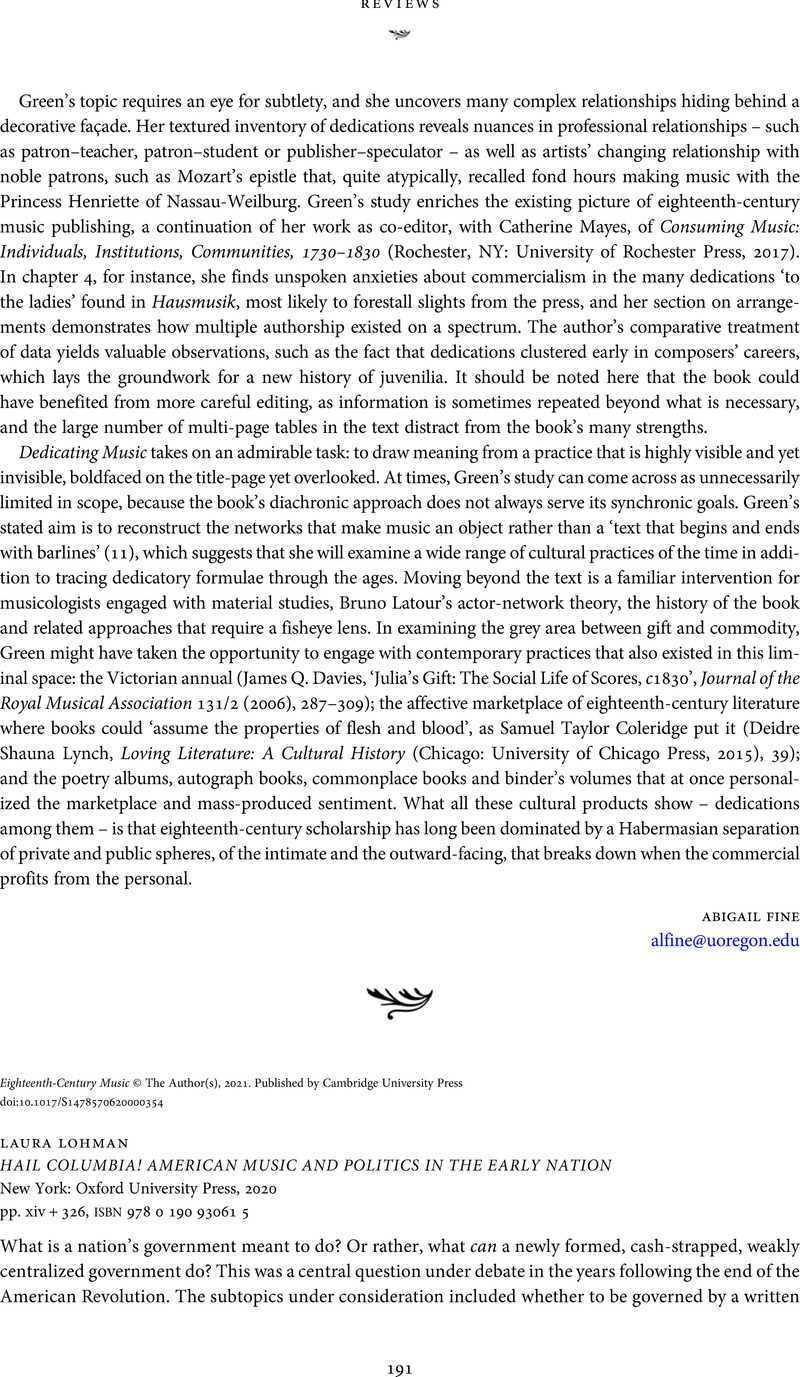No CrossRef data available.
Article contents
LAURA LOHMAN HAIL COLUMBIA! AMERICAN MUSIC AND POLITICS IN THE EARLY NATION New York: Oxford University Press, 2020 pp. xiv + 326, isbn 978 0 190 93061 5
Published online by Cambridge University Press: 05 February 2021
Abstract
An abstract is not available for this content so a preview has been provided. Please use the Get access link above for information on how to access this content.

- Type
- Review: Book
- Information
- Copyright
- Copyright © The Author(s), 2021. Published by Cambridge University Press





